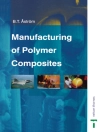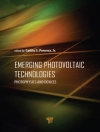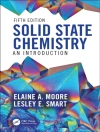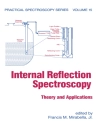The book comprehensively describes the latest applications and recent advances in materials development for integrated nanophotonics. It can help readers understand the knowledge and follow the cutting-edge research in this field.
Table of Content
1. Packaging and Test of Photonic Integrated Circuits
2. The Last Mile Technology of Silicon Photonics Towards Productions and Emerging Applications
3. Integrated Nonlinear Photonics and Emerging Applications
4. Excitation, Generation, Positioning and Modulation for Quantum Light Sources Integrated on Chip
5. Integratable Quantum Light Sources in Two-Dimensional Materials
6. Inverse Design for Integrated Photonics Using Deep Neural Network
7. Deep Learning Driven Data Processing, Modeling, And Inverse Design for Nanophotonics
8. Optical Waveguide of Nanophotonics Lithium Niobite
9. Active, Tunable and Reconfigurable Nanophotonics
About the author
Peng Yu received the M.S. and Ph D. degrees from University of Electronic Science and Technology of China (UESTC), Chengdu, China, in 2015 and 2018, respectively. From February 2017- February 2018, he was a visiting scholar with Department of Electronic Materials Engineering, Research School of Physics, Australian National University. He is currently a research assistant in the Institute of Fundamental and Frontier Sciences, UESTC. His current research interests include plasmon-enhanced light-matter interactions, photonic integrated circuits. He has published over 30 Journal papers, and edited one book.
Hongxing Xu mainly engaged in plasmonics, nanophotonics, single-molecule surface-enhanced Raman spectroscopy and integrated nanophotonic devices. He is one of the pioneers in single-molecule surface-enhanced Raman spectroscopy (SERS) and plasmonics. He discovered the plasmonic nanogap effect for huge electromagnetic enhancement, which is the physical basis of single-molecule SERS and many other plasmon-enhanced optical processes. He demonstrated the probing of sub-picometer vertical differential resolutions using cavity plasmons. He invented plasmonic logic gates and revealed the fundamental properties and mechanisms of plasmonic nanowire waveguides and networks. He published more than 200 peer-reviewed papers with over 15000 citations and H-index 60 on Web of Science. He gave more than 70 invited presentations at international conferences and organized more than 20 international conferences and workshops. He is an associate editor of Nanoscale and Optics Express and a member of the advisory board or editorial board of Nanoscale, Nanophotonics, Frontiers of Physics, etc.
Zhiming Wang is currently a professor in University of Electronic Science and Technology of China. He has long been engaged in the molecular beam epitaxial growth and characterization of compound semiconductor nanomaterials, and the design and preparation of optoelectronic prototype devices. He is one of the leaders in this field in the world and has achieved a series of innovative research results. He has published about 300 peer-reviewed articles with H-index 38. He also serves as editor of many international journals.












